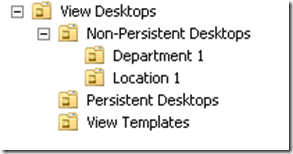“We choose to go to the moon. We choose to go to the moon in this decade and do the other things, not because they are easy, but because they are hard, because that goal will serve to organize and measure the best of our energies and skills, because that challenge is one that we are willing to accept, one we are unwilling to postpone, and one which we intend to win, and the others, too. “
– John Fitzgerald Kennedy, September 12th, 1962
If you haven’t noticed, the frequency of my posts has dropped off quite a bit. It’s surprising, even to me, since Horizon View 6.0 just came out.
My time, over the last couple of weeks, has been occupied by a few tasks. Most of that time has been occupied by the Virtual Design Master competition.
What is Virtual Design Master?
Virtual Design Master is a community-run Internet “reality show,” now in it’s second season, that showcases the infrastructure design skills of the contestants. It’s one part Chopped, one part Iron Chef, and one part The Walking Dead.
Contestants are tasked with putting together a formal design, following a design methodology, on an open-ended but challenging problem surrounding the storyline for the season. All decisions must be justified and design decisions documented.
Oh…and did I mention that you have four days to do it?
Each week, the participants have to defend their design to noted members of the virtualization community and get feedback on the choices they made.
Why do it?
Virtual Design Master can be hard and stressful. There is a lot to learn in a short period of time, and it has to be balanced with family, work, and anything else going on in life.
The challenges can require cutting edge, or even bleeding edge, technology that needs to be learned in a few days. For instance, one of the constraints of the moonbase challenge was working with an IPv6-only network. The design had to identify which components would not work with IPv6 or would require a dual-stack approach and design around it. Other constraints on that challenge required participants to learn about technology that they might not have used on a daily basis.
It also forces you to document your design with a formal design document. The document isn’t a simple two to three page abstract but a detailed document outlining the design decisions, components, justifications, and component configurations as they are intended to be implemented.
Although the process of designing an infrastructure and documenting it in a short period for the competition can be challenging, it’s not nearly as bad as it sounds.
The community around the competition is great, and competitors are more than willing to help each other with questions on equipment and design reviews. Answers to questions are a tweet or an email away.
But the takeaway that I found most useful was learning how to write a design document. Prior to participating, I had never written a formal design. In the two weeks of Virtual Design Master, I’ve written two that were longer and more elaborate than any design documentation I had seen for a project that I participated in.
Writing documentation has some secondary benefits as well. It makes you think about your design and how you would explain it. That makes it easier to explain, and eventually, defend. This, in turn, makes it easier to answer the question “If I was hit by a bus, what would my replacement need to know?”
Takeaways
I started this post with an excerpt from a speech by President Kennedy where he announced his vision of putting a man on the moon within a decade. There is one segment of that speech that really sums up what this competition does:
“…not because they are easy, but because they are hard, because that goal will serve to organize and measure the best of our energies and skills…”
Participating in Virtual Design Master is a lot of fun and a great learning experience. But it also challenges you, organizes you, and prepares you for bigger things.
As John Arrasjid said:
Just checked out #virtualdesignmaster – Excellent way to practice for VCDX or a role as an Infrastructure Architect. Love the backstory!
— John Arrasjid (@vcdx001) July 22, 2014
It is great practice for taking your skills to the next level, learning, and engaging the community.

